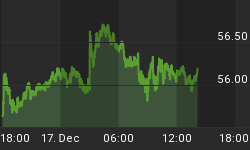This is an extension of my July 3, 2003 communication:
The extension consists of charting the second 250 trading days after each signal rather than the first 250 trading days.




The various pattern pairs have now dissipated to the extent that they are hard to recognize this long after their respective Coppock Curve buy signals.
Still, line charts of the two relevant coordinates shown in my March 17, 2004 and April 24, 2004 communications (using the linear form of the Six by Ten Trin) suggest that the pattern pairs persist.
However, post-signal evidence obtained via a different model, and presented in my June 1, 2004 communication, indicates that all post-signal patterns are somewhat alike anyway, implying that the search for pattern pairs becomes more difficult the farther beyond in time the end dates of any patterns lie from their respective signal dates.
Nevertheless, for curiosity's sake, I will continue to update.
PS: Note that I now use 8/31/82 as a buy signal date, rather than 9/30/82 which I erroneously used heretofore.















